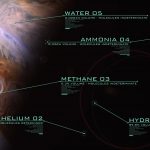
The Jupiter Time Capsule
Given that we don’t yet know whether a planetary core exists within Jupiter, much of our understanding of giant planet formation comes from a different line of investigation: the bulk composition of the planet. The composition of the atmosphere that we observe today results from a combination of many processes – chemistry initiated […]

Podcast: Pythagoras’ Trousers
Juno has just passed a major milestone in its first wide orbit around the giant planet, having passed by its apojove, the furtherest distance to Jupiter (8.1 million km). It will now fall back down the gravity well towards its next close encounter with the planet on August 27th. That completes the first of two […]
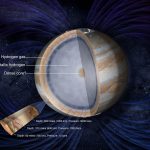
The Birth of Giants
Dr. Leigh Fletcher discusses how Juno could revolutionise our understanding of the origins of Jupiter via gravitational mapping of its internal structure. The presence of Jupiter has had a profound influence on the architecture of our solar system, shaping the conditions that have led to the stable, habitable environment that exist here on Earth. […]
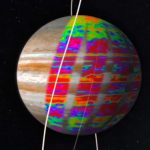
When it Rains…
Water, water, everywhere. Dr. Leigh Fletcher appeared on this month’s episode of BBC Sky at Night to discuss Juno’s goals at Jupiter, and describes the importance of Jupiter’s water in this new post. If our ideas about the formation of giant planets stand up to the observational tests of the Juno […]

Leicester’s Juno Magnetospheric and Auroral Science
While much of Stan Cowley’s early scientific career concerned theoretical and data analysis studies of the Earth’s outer plasma environment, involvement in work on the gas giant planets began with his participation in the analysis of Ulysses energetic particle and magnetic field data obtained during the 1992 Jupiter flyby. Subsequently this research strand extended into […]

Leicester Atmospheric Science and Juno
In addition to the suite of remote sensing instruments carried aboard the Junospacecraft, the mission coincides with an unprecedented international campaign to scrutinise Jupiter’s dynamic, evolving atmosphere from Earth-based facilities. Juno carries a microwave radiometer capable of sounding below Jupiter’s top-most cloud decks to hundreds of bars of pressure to understand the deep processes underpinning […]

Hubble captures vivid auroras in Jupiter’s atmosphere
Astronomers are using the NASA/ESA Hubble Space Telescope to study auroras — stunning light shows in a planet’s atmosphere — on the poles of the largest planet in the Solar System, Jupiter. This observation programme is supported by measurements made by NASA’s Juno spacecraft, currently on its way to Jupiter. Jupiter, the largest planet in […]
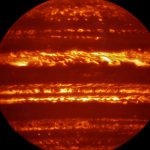
Glowing Jupiter awaits Juno
This article was released by the European Southern Observatory, Royal Astronomical Society and University of Leicester press office on Monday June 27th to coincide with the UK National Astronomy Meeting. Stunning new images and the highest-resolution maps to date of Jupiter at thermal infrared wavelengths give a glowing view of Juno’s target, a week ahead […]

Juno and the University of Leicester
The University of Leicester has a long history of involvement in cutting edge space and planetary research spanning more than five decades – a Leicester-built instrument has been operating in space every single year since 1967, and Leicester scientists and engineers have played vital roles in missions with many different space agencies, including NASA, […]
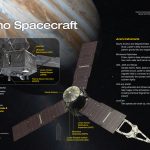
Juno’s Science – What do we hope to learn?
Future blog entries will look at specific examples of the science being done at the University of Leicester that is related to Juno’s exploration of Jupiter. But to set this work in context, today we’ll briefly summarise the overarching goals of the Juno mission, the experiments on board, and what we hope to learn from […]

 Subscribe to Physics & Astronomy's posts
Subscribe to Physics & Astronomy's posts
Recent Comments